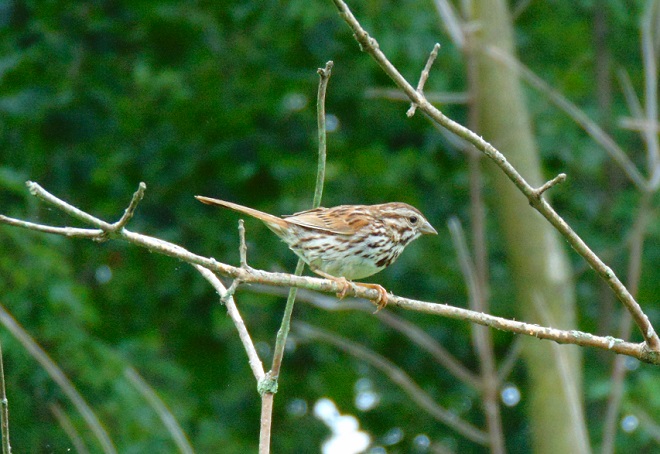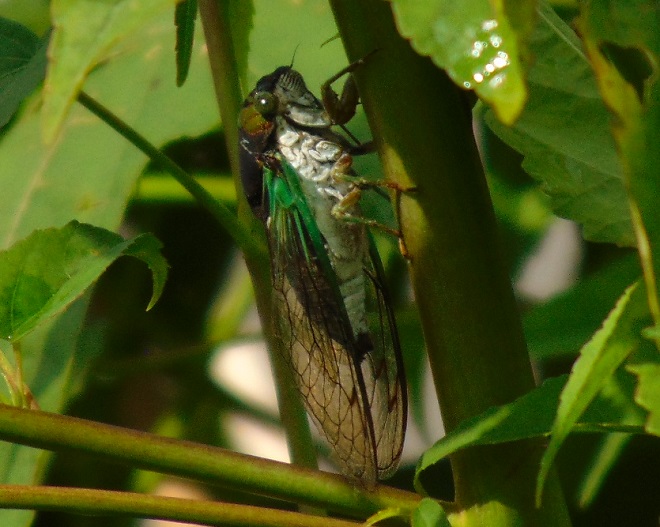There’s something frightening going on down there. In the sand, beneath the plants on the shoreline, there’s a pile of soil next to a hole it’s been digging. Now, it’s dragging something toward the tunnel it made. What does it have? Is that alive?
We know how the system works, the food chain that is. The small stuff is eaten by the progressively bigger things, and there are fewer of the latter than there are of the former, thus the whole network keeps operating long-term. Some things chew plants, others devour animals whole or in part, and then there are those, like us, that do both. In the natural ecosystem, predators keep the numerous little critters from getting out of control and decimating certain other plant or animal populations and wrecking the whole business. When man brings an invasive and potentially destructive species to a new area, occasionally we’re fortunate enough to have a native species adapt and begin to keep the invader under control by eating it. It maintains the balance. It’s easy enough to understand.


Late summer days are marked by a change in the sounds coming from the forests surrounding the falls. For birds, breeding season is ending, so the males cease their chorus of songs and insects take over the musical duties. The buzzing calls of male “Annual Cicadas” (Neotibicen species) are the most familiar. The female “Annual Cicada” lays her eggs in the twigs of trees. After hatching, the nymphs drop to the ground and burrow into the soil to live and feed along tree roots for the next two to five years. A dry exoskeleton clinging to a tree trunk is evidence that a nymph has emerged from its subterranean haunts and flown away as an adult to breed and soon thereafter die. Flights of adult “Annual Cicadas” occur every year, but never come anywhere close to reaching the enormous numbers of “Periodical Cicadas” (Magicicada species). The three species of “Periodical Cicadas” synchronize their life cycles throughout their combined regional populations to create broods that emerge as spectacular flights once every 13 or 17 years.

For the adult cicada, there is danger, and that danger resembles an enormous bee. It’s an Eastern Cicada Killer (Specius speciosus) wasp, and it will latch onto a cicada and begin stinging while both are in flight. The stings soon paralyze the screeching, panicked cicada. The Cicada Killer then begins the task of airlifting and/or dragging its victim to the lair it has prepared. The cicada is placed in one of more than a dozen cells in the tunnel complex where it will serve as food for the wasp’s larvae. The wasp lays an egg on the cicada, then leaves and pushes the hole closed. The egg hatches in a several days and the larval grub is on its own to feast upon the hapless cicada.

Other species in the Solitary Wasp family (Sphecidae) have similar life cycles using specific prey which they incapacitate to serve as sustenance for their larvae.

The Solitary Wasps are an important control on the populations of their respective prey. Additionally, the wasp’s bizarre life cycle ensures a greater survival rate for its own offspring by providing sufficient food for each of its progeny before the egg beginning its life is ever put in place. It’s complete family planning.
The cicadas reproduce quickly and, as a species, seem to endure the assault by Cicada Killers, birds, and other predators. The Periodical Cicadas (Magicicada), with adult flights occurring as a massive swarm of an entire population every thirteen or seventeen years, survive as species by providing predators with so ample a supply of food that most of the adults go unmolested to complete reproduction. Stay tuned, 2021 is due to be the next Periodical Cicada year in the vicinity of Conewago Falls.
SOURCES
Eaton, Eric R., and Kenn Kaufman. 2007. Kaufman Field Guide to Insects of North America. Houghton Mifflin Company. New York.
